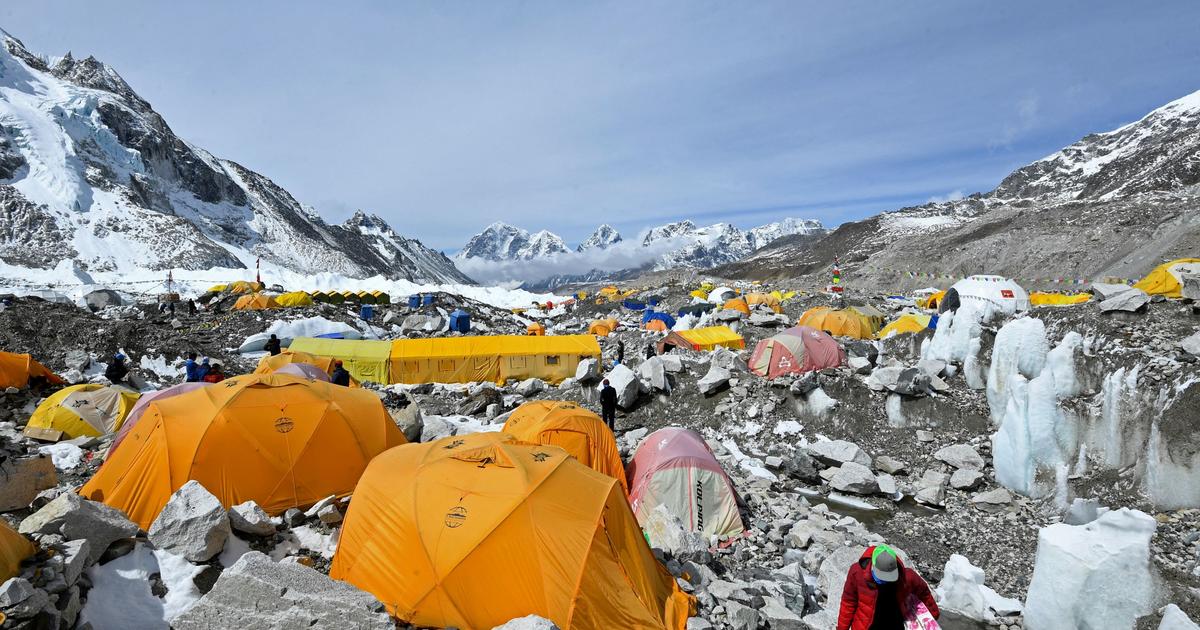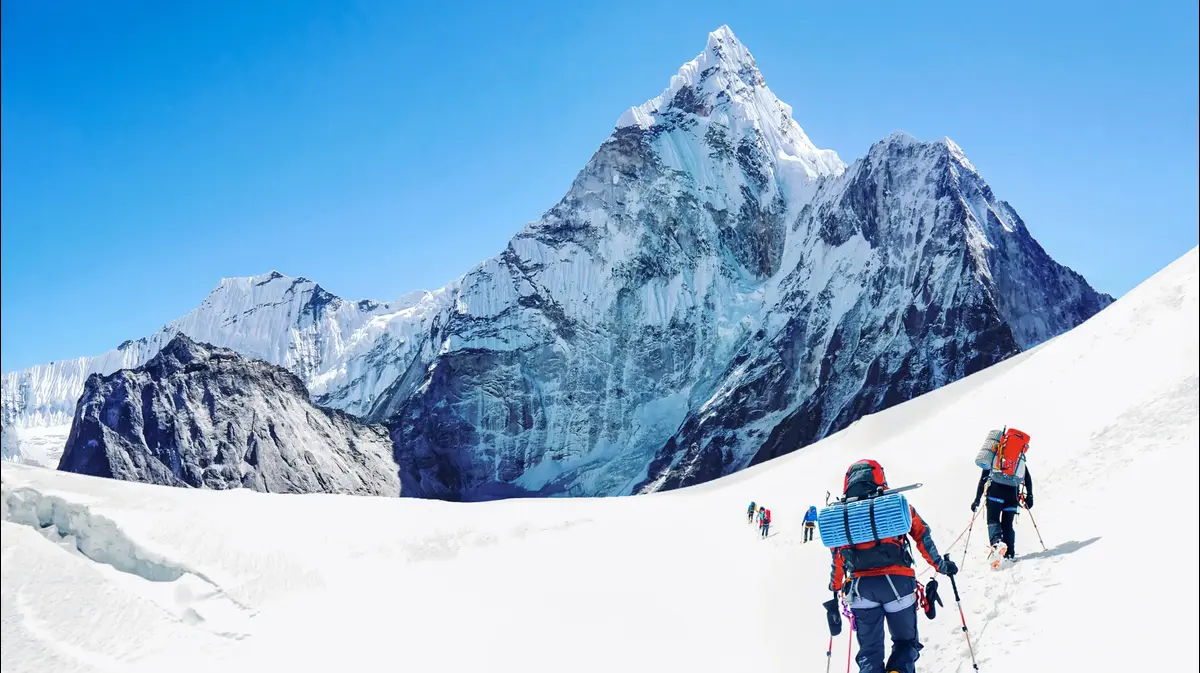He is the roof of the world.
Located in the Himalayan range, on the border between Nepal and China, Everest culminates at 8849 meters above sea level.
Nearly 70 years after its conquest, the highest peak in the world continues to make trekkers dream.
But today, its rise is threatened by melting ice and human activity.
Read also“The mortality rate in Everest is really enormous”: before the Vendée Globe 2024, sailor Maxime Sorel will set off to attack the roof of the world
Cracks threaten climbers
For good reason, the base camp where mountaineers usually set up their first bivouac is located on the Khumbu Glacier, which, like many other glaciers in the Himalayas, is melting and thinning rapidly in the wake of global warming.
“
Most of the glacier is covered in rock debris, but there are also areas of exposed ice, called ice cliffs, and it is the melting of the ice cliffs that destabilizes the glacier the most.
explains researcher Scott Watson to the BBC.
According to him, the glacier would lose 9.5 million cubic meters of water each year.
Observations which could have dangerous consequences for mountaineers and which therefore push the Nepalese government as well as the committee created to facilitate and monitor mountaineering in the Everest region, to want to move it.
Climbers also claim that crevasses and fissures in the surface of the glacier are appearing more frequently than before.
“
In the morning, many of us have this chilling experience that we could have fallen into at night.
The cracks on the ground develop so often that it is quite risky
,” Colonel Kishor Adhikari of the Nepalese army told the BBC.
An anthropogenic impact
Global warming is not solely responsible for this situation.
Today, Everest is a leading tourist area.
The practice of extreme mountaineering having become popular, the base camp accommodates up to 1,500 people during the spring climbing season.
For Khimlal Gautam, one of the leaders of the committee which recommended the relocation of the camp, the presence of these tourists would have a considerable impact on the glacier.
"
For example, we found that people urinate around 4,000 liters at base camp every day
," he said.
The other big problem is pollution based on plastics and especially hydrocarbons.
“
The massive amount of fuels like gas and kerosene that we burn for heating and cooking will undoubtedly have an impact on the ice
,” Khimlal Gautam worries.
Climate change has already caused the loss of 2000 years of ice in just 25 years.
Read alsoDeath of a Nepalese mountaineer during the ascent of Everest
Moving the base camp therefore seems to have become essential for the preservation of the fragile glacial environment, but also for the sustainability of the mountaineering activity.
This decision is unanimous within the group of experts who studied the project, and the camp which is currently at an altitude of 5364m should be relocated to a lower area of about 200 to 400 meters.
A resolution that still has a disadvantage: that of extending the expedition between base camp and camp 1, the second stage of the ascent of the mountain.
Most mountaineers climb Everest from the Nepalese side, but if the route seems less attractive to them, they may decide to look to China.






/cloudfront-eu-central-1.images.arcpublishing.com/prisa/EN3SW5NDZVGYPJEKNJGQDIP2UQ.jpg)

